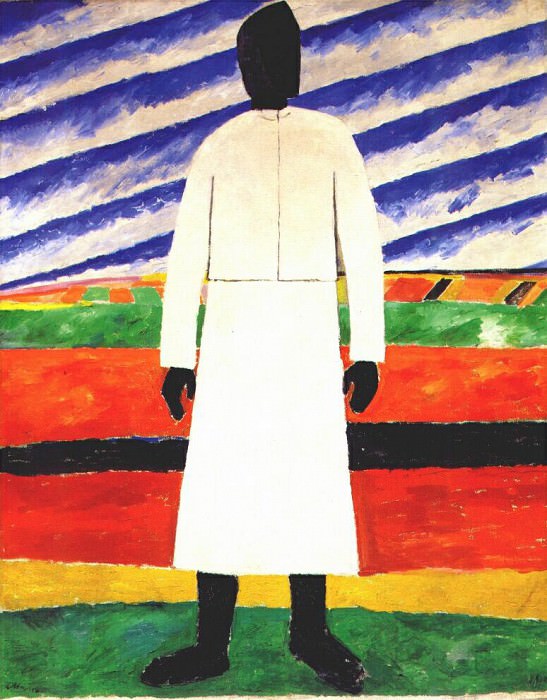malevich peasant woman c1928-30 Kazimir Malevich (1879-1935)
Kazimir Malevich – malevich peasant woman c1928-30
Edit attribution
Download full size: 774×992 px (0,1 Mb)
Painter: Kazimir Malevich
Kazimir Malevich created "Peasant Woman" in the 1928-1930s. He remained faithful to his traditions: three-dimensional geometric shapes of mottled hues, disproportionate body parts, a minimalistic background, and people utterly devoid of individuality. The artist depicts his character with a black oval in place of the head, hands helplessly and powerlessly lowered, the white garment indicates that it is a woman.
Description of the painting "Peasant Woman" by Kazimir Malevich
Kazimir Malevich created "Peasant Woman" in the 1928-1930s. He remained faithful to his traditions: three-dimensional geometric shapes of mottled hues, disproportionate body parts, a minimalistic background, and people utterly devoid of individuality.
The artist depicts his character with a black oval in place of the head, hands helplessly and powerlessly lowered, the white garment indicates that it is a woman. The figure stands on contrasting strips of colored field.
There are no other bodies in the background: here too the author has remained faithful to his style. However, the distinctive feature of the "Peasant Woman" is the contour of her dress. Malevich likes to saturate his works with a variety of shades, applying gradient. Comparing the black and white woman with the overall multicolor can indicate that her image is gloomy.
Observing the canvas, the viewer will be caught up in a sense of irreversibility of any loss, it, increasing in size. The paintings symbolize the way of life of the peasants, the working people. Their slave labor, endless worries and agony of hard life - that’s what these paintings depict. Malevich depersonalizes his characters, shows their massiveness, sameness, insignificance and pettiness of human life.
Uniqueness he expresses not by facial features and shapes and the diversity of colors. There is also room for the imagination: for a long time looking at the figures appear faces, roles, actions. Thus each person draws his own version of what is happening, what is inscribed on the canvas.
An important feature of the author’s work is that each subject, figure, body part - drawn separately, stacked on top of each other - this gives the paintings an expressive look.
Кому понравилось
Пожалуйста, подождите
На эту операцию может потребоваться несколько секунд.
Информация появится в новом окне,
если открытие новых окон не запрещено в настройках вашего браузера.
You need to login
Для работы с коллекциями – пожалуйста, войдите в аккаунт (open in new window).




















You cannot comment Why?
Perhaps it’s a painting of a man in a white dress standing in front of.